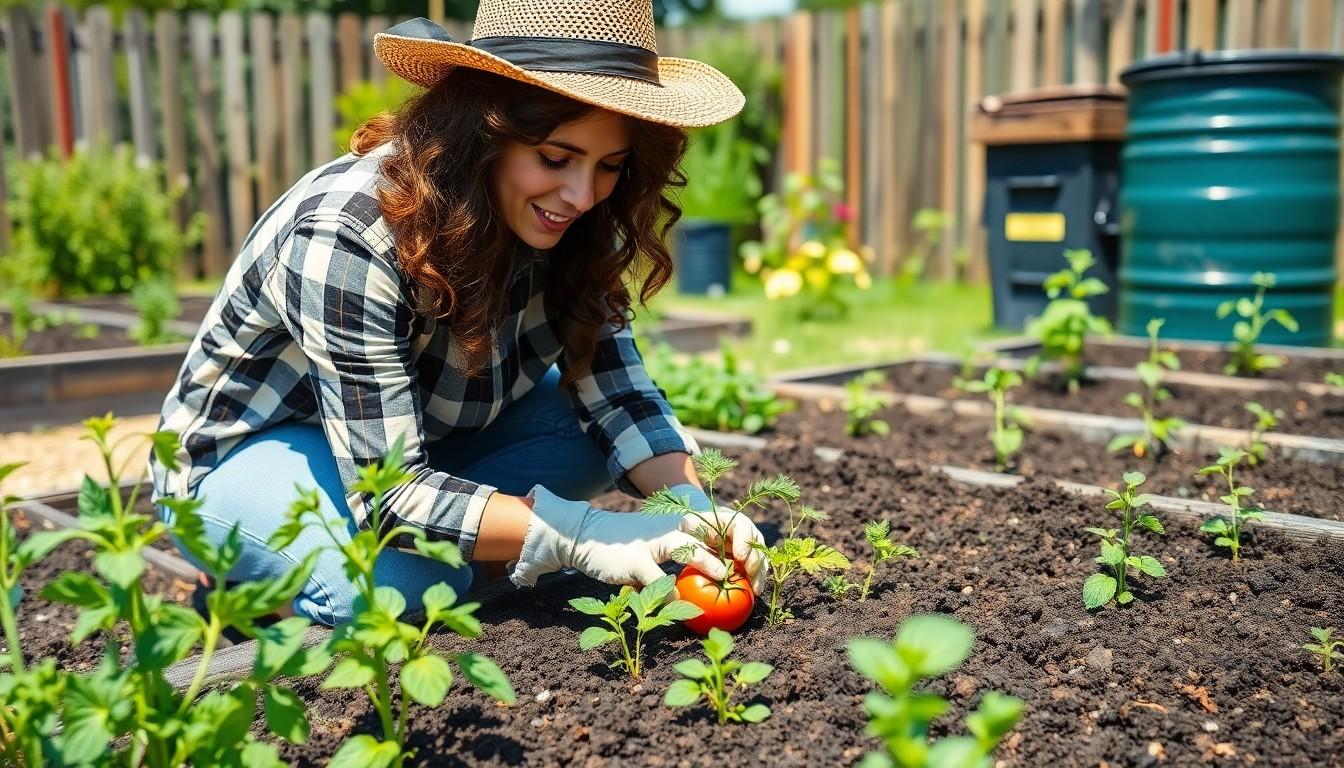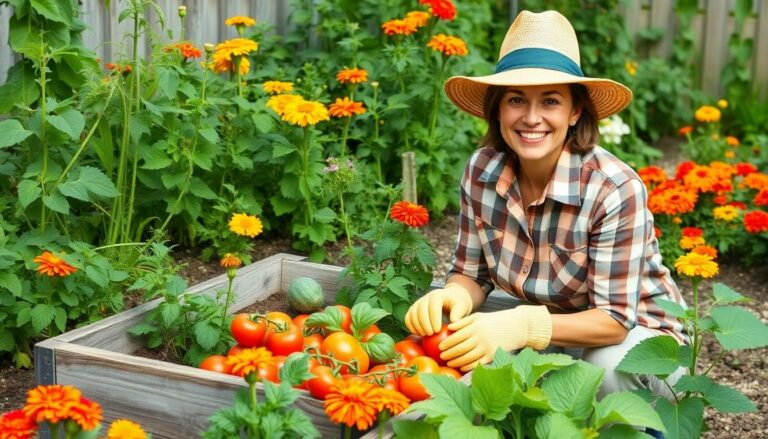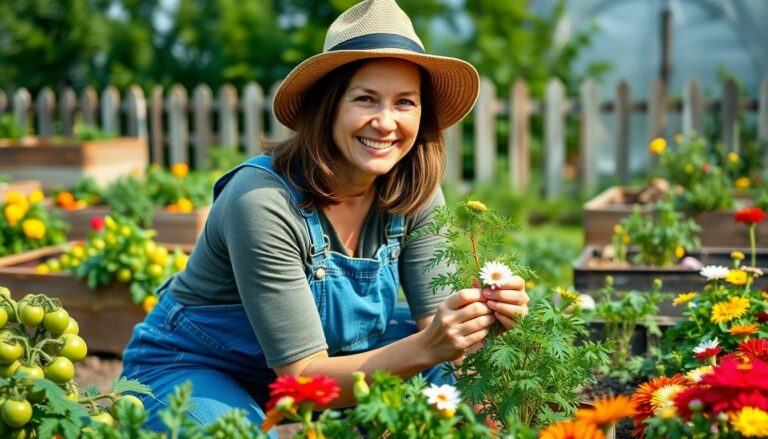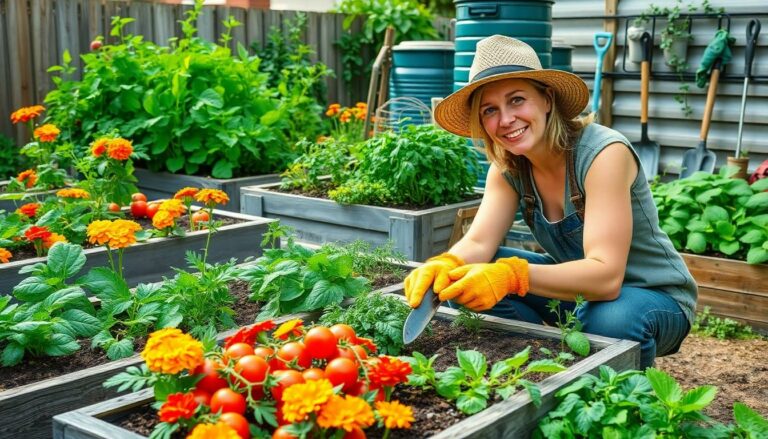In a world where grocery store prices seem to climb higher than a squirrel on a caffeine high, homestead gardening offers a refreshing escape. Imagine stepping into your backyard and plucking fresh tomatoes, crisp lettuce, and fragrant herbs—all without breaking the bank. It’s not just about growing food; it’s about cultivating a lifestyle that’s as rewarding as it is delicious.
Homestead Gardening
Homestead gardening encompasses the practice of cultivating food in one’s backyard or small plot of land. This approach not only addresses rising grocery prices but also promotes sustainability and self-sufficiency.
Definition and Importance
Homestead gardening refers to growing food primarily for personal use. It emphasizes organic methods and local resources, minimizing reliance on commercial agriculture. Importance arises from the ability to produce fresh vegetables, fruits, and herbs at home. This method encourages individuals to reconnect with their food sources and supports environmental health through reduced transportation and packaging waste.
Benefits of Homestead Gardening
Homestead gardening offers numerous advantages. It reduces grocery expenses considerably by providing free or low-cost fresh produce. Individuals experience enhanced nutrition, as homegrown foods often contain more nutrients than store-bought varieties. Gardening also promotes physical activity and fosters mental well-being, creating a sense of accomplishment. Sustainable practices encourage biodiversity and protect local ecosystems. Lastly, it cultivates community connections as individuals often share tips, seeds, and produce with neighbors, enhancing social ties.
Essential Tools and Supplies
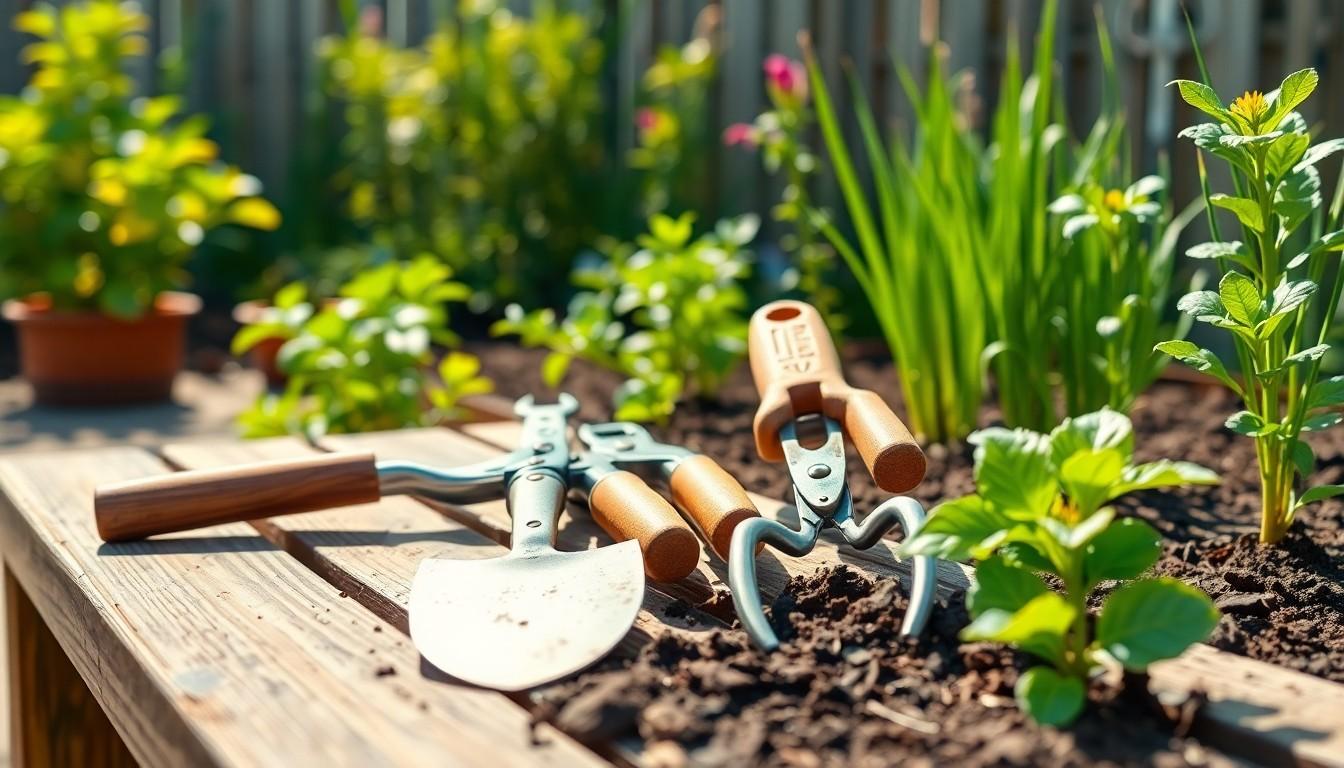
Homestead gardening requires specific tools and supplies for effective cultivation. Gathering the right items ensures a productive gardening experience.
Gardening Tools
Essential gardening tools include hand trowels, pruners, and hoes. Hand trowels help with digging and planting small seeds. Pruners allow for easy trimming of plants, promoting healthy growth. Hoes cultivate soil, making it easier to manage weeds. Other tools such as shovels and rakes improve soil preparation and maintenance. A garden fork can aerate compacted soil, enhancing drainage and root development. Investing in high-quality tools boosts efficiency and reduces fatigue during gardening tasks.
Soil and Fertilizers
Soil composition plays a crucial role in plant health. Quality garden soil contains organic matter, promoting nutrient retention. Compost serves as an excellent natural fertilizer, rich in essential nutrients. Choosing mulch helps retain moisture and suppress weeds. Organic fertilizers, such as bone meal and fish emulsion, add specific nutrients without harmful chemicals. Soil testing kits provide valuable insights into pH and nutrient levels, guiding amendments for optimal growth. Regularly enriching soil fosters thriving plants and bountiful harvests.
Planning Your Homestead Garden
Planning a homestead garden involves careful consideration of various factors that contribute to successful cultivation. Achieving a productive garden starts with the selection of an ideal location.
Choosing the Right Location
Selecting a suitable spot for the garden requires assessing sunlight exposure. Most vegetables and herbs thrive in areas receiving at least six hours of direct sunlight daily. Drainage plays a crucial role; positioning the garden on higher ground helps prevent waterlogging. Proximity to a water source enhances convenience for irrigation. Additionally, locating the garden near the kitchen simplifies access to fresh produce.
Garden Layout and Design
Designing the garden layout needs to consider the size and shape of the available space. Raised beds are popular for improving drainage and accessibility. Companion planting strategies maximize space usage; for instance, growing tomatoes alongside basil can enhance flavors and deter pests. Efficiency guides the placement of pathways, allowing easy access without compacting soil. Crop rotation practices ensure soil health by minimizing nutrient depletion over time.
Plant Selection for Homestead Gardening
Selecting the right plants is crucial for a successful homestead garden. Focus on varieties that thrive in the local climate and soil conditions.
Vegetables and Herbs
Consider tomatoes, lettuce, and peppers for their ease of growth and versatility. Vegetables like cucumbers and squash produce abundant yields, while herbs such as basil and parsley enhance meals and attract pollinators. Each plant offers unique benefits, contributing to a diverse and healthful diet. Home gardeners often benefit from selecting disease-resistant varieties. These vegetable choices not only provide sustenance but also support a sustainable lifestyle.
Fruits and Berries
Selecting fruits like strawberries, blueberries, and raspberries maximizes garden productivity. These berry plants often require minimal maintenance and yield high rewards. Apple and peach trees also produce delicious fruits for fresh eating or preserving. Each type can thrive in varying conditions, making them adaptable choices for many gardens. Faster-growing varieties offer quicker gratification, ensuring a continuous harvest throughout the season. Opting for companion plants enhances fruit production and reduces pests, making the garden ecosystem healthier.
Maintenance and Care
Maintenance and care are crucial for a thriving homestead garden. Keeping plants healthy requires regular attention to watering, pest management, and soil health.
Watering and Irrigation
Watering involves understanding plants’ specific needs. Established plants typically require less frequent watering, while seedlings need consistent moisture. Implementing drip irrigation systems delivers water directly to roots, promoting efficiency. Rain barrels can collect natural water, helping conserve resources. Regularly checking the moisture level of the soil aids in avoiding over or under-watering. During hot months, watering in the early morning reduces evaporation, ensuring plants receive adequate hydration.
Pest Control and Organic Practices
Pest control starts with prevention. Companion planting provides natural deterrents for harmful insects. Crop rotation disrupts pest cycles, maintaining a healthy balance in the garden. Using organic practices encourages beneficial insects while minimizing harmful exposure. Neem oil serves as a natural pesticide without adverse effects on plants. Handpicking larger pests can effectively manage infestations. Regular inspections reveal signs of damage early, allowing for quicker intervention and customized solutions.
Harvesting and Storage
Harvesting involves careful timing and techniques to ensure optimal flavor and nutrition in homegrown produce.
Best Practices for Harvesting
Timing matters when harvesting fruits and vegetables. Checking for ripeness enhances taste and quality. For tomatoes, a deep red color indicates readiness, while cucumbers should be firm and green. Using sharp tools prevents damage; snip stems instead of pulling them. Aim for early morning or late afternoon, as cooler temperatures retain moisture and freshness. Always check the weather before harvest, as dry conditions are preferable to avoid spoilage. Lastly, handle produce gently to minimize bruising and extend shelf life.
Methods for Storing Produce
Storage methods play a critical role in maintaining freshness. Refrigeration works well for leafy greens and berries, while most root vegetables thrive in cool, dark places. Using breathable bags improves airflow and reduces moisture accumulation. Jarring or freezing preserves seasonal produce such as tomatoes and berries; it retains flavor and nutritional value. For herbs, drying or freezing retains essential oils and vibrant flavors. Canning offers long-term preservation, making it a popular choice for fruits like peaches. Understanding these methods ensures a successful supply of homegrown food year-round.
Promoting Environmental Health
Homestead gardening offers a rewarding path to self-sufficiency and sustainability. By cultivating fresh produce at home individuals not only save money but also enhance their well-being. This practice fosters a deeper connection to food sources while promoting environmental health.
With the right tools and planning anyone can create a thriving garden that yields delicious fruits and vegetables. The joy of harvesting homegrown produce can’t be overstated. It’s a fulfilling experience that strengthens community ties through shared knowledge and resources.
Embracing homestead gardening is more than just a hobby; it’s a lifestyle choice that brings numerous benefits. As more people turn to this practice they’ll discover the immense satisfaction that comes from nurturing their own food.

